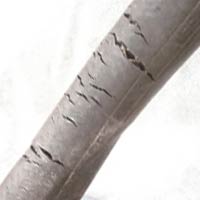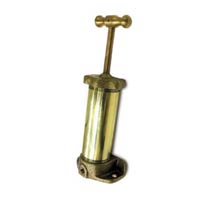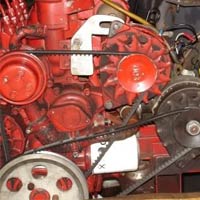A basic guide for cruising or living on a narrowboat
Firstly – a few words about your author! I am not (and I can’t stress this enough) a marine engineer – just an ordinary guy with a reasonable working knowledge of basic narrowboat maintenance – I know my way around some of the oily bits under the rear deck. Which, let’s face it, is probably the same level of competence as the vast majority of us. I mention this because I am sure there are those who are far better qualified than I am to give detailed technical advice – but that is not the purpose of this piece.
I have tried to tackle some of the more mundane tasks that the average narrowboat owner / dweller has to contend with on a day to day basis, and most of what I will be touching upon should be within the abilities of most people.
Batteries
Most narrowboats, and particularly those where the boater is on the vessel all year round, have a bank of batteries. Usually, these comprise of a starter battery (used to crank the engine over) and a number of leisure batteries (between 2 and 4 of these) which provide ‘domestic’ power. Diesel engines require that the narrowboat owner preheats glow plugs to help ignite the fuel as the engine turns over and fires, so it is vital this battery be kept in tip top condition. It may sound obvious, but if your engine is not running, the other batteries don’t get charged!
Check the level of the electrolyte (the acid inside the battery) at least once a month, and top it up with distilled water if necessary. As a general rule, the level should cover the top of the lead plates by about 6mm or a quarter of an inch. Despite being called 12 volt batteries, the actual reading from a healthy, fully charged battery should be about 13.2V but anything over 12.5 volts is perfectly acceptable.
Batteries should be securely fastened so they cannot move in the case of a bump or a collision, and these should be wired as neatly as possible – just look at the two conflicting examples below!

Cooling System
Most narrowboats have a keel cooling system, whereby the heat generated by the engine is cooled (in much the same way as in a car radiator) by passing through a skin mounted tank on the side of the boat. Some boats have raw water cooling, where the water is taken from the canal or river, through a strainer and heat exchanger before being pumped back out to the canal.
When living on a narrowboat, some of that heat can be passed through a calorifier (it looks like a copper cylinder – a bit like an immersion tank) to provide you with domestic hot water as a by-product of running your engine.

Either way, it is vital to keep your eyes on the condition of ALL of the hoses that run to and from your engine. Rubber can perish, and a cruise can be brought to a very abrupt halt if a main hose splits and the engine coolant runs away!
Where you have a keel cooled narrowboat, you essentially have a closed cooling circuit, so in the winter, commercial antifreeze can be added to prevent the water in the engine from freezing.
It sounds obvious but do try to always carry a few spare rubber hoses – the engine can’t be run if the water is pouring out of the cooling system – so there goes your power again….
The Stern Gland
It may sound like something that a disapproving maiden aunt was born with, but this piece of equipment performs a vital function on a narrowboat. Where the prop shaft exits the engine compartment and before you get to the propeller, you will find something that looks like a collar. This is the stern gland, and it is normally full of packing material. Most have graphite impregnated, square profile rope that is wound around the prop shaft and then tightened down with some form of compression plate.
Running from this collar will be a tube, at the end of which sits the Stern Gland Greaser. Looking a bit like a detonation plunger, this should be filled with water resistant grease, and then turned down to force a small quantity of grease between the packing and the prop shaft to reduce friction.

Refilling the stern gland is usually simple, but can be a bit messy. This is the way I do it. First, fully unscrew the plunger. Then unscrew the entire stern gland greaser body from its base plate. Finally, unscrew the plunger from the stern gland greaser body. What you have now is a hollow brass tube, and a plunger. Most narrowboat stern gland grease comes in a plastic or metal tub with a large ‘washer’ inside. Pushing the hollow brass tube down firmly over the washer will force fresh grease into the tube. Once refilled, just reattach the plunger, wipe off any excess grease and re-screw the whole assembly back onto the base plate. Job Done
The Drive Belt
The drive belt (what in the good old days we used to call a fan belt) is subject to greater demand on a narrowboat than in a car. If you consider the greater level of 12v electrical appliances now found on a boat, it is easy to see why particular attention should be paid to this usually overlooked piece of kit. The drive belt is usually connected to the alternator and water pump via the crankshaft pulley at the bottom of the engine. Whilst mine is easily accessible (a cruiser stern narrowboat has its virtues), some traditional stern narrowboats involve the sort of twisting and contortions that Harry Houdini would have been proud of.
The easiest way to change a belt, (assuming it hasn’t flown off in a fit and is now residing in the oily depths of your sump) is to slacken off the alternator mounting bolts, push the alternator in to release any tension and unloop the belt.

Refitting is a simple process of hooking the new belt over the crankcase and water pump pulleys, back over the alternator pulley and then applying tension to the belt by pulling the alternator back out. To get sufficient tension on the belt so that it will not slip, you may need to lever the alternator out with a wooden rod or bar before tightening the mounting bolts again.
On its longest side, the belt should have half an inch or 12mm free play. Remember that belts have a tendency to stretch with age, so examine the belt regularly, and certainly check it shortly after changing it.

I would like information on engine courses
Janis – I have no affiliation with the company – but Willow Wren Training in Rugby do run a diesel engine maintenance course. Further details can be found here http://www.willowwrentraining.co.uk/diesel.htm – be sure to tell them I sent you!
Hi Janis. Willow Wren in Rugby do run these courses and they are very good. We at Bisham Abbey Sailing also run it if you are based a bit further south. However there are lots of centres nationwide details can be found here. http://www.rya.org.uk/wheresmynearest/Pages/WheresMyNearest.aspx
As mentioned before, I have NO affiliation to either Willow Wren or Bisham Abbey Sailing, and include their details purely for reference for the benefit of my website visitors. The inclusion of the details is not an endorsement of either company, and it is down to the individual who is seeking an engine course to check with the companies concerned that it will satisfy their requirements first. 🙂
Thanks Colin. I was looking for information about grease for the stern gland on my boat but didn’t know what it was called. I’ve just saved your page to favourites.
Great article (again). Maybe you should come on a RYA diesel engine maintenance course.
I will tweet on to our followers. 🙂 Cheers Peter.